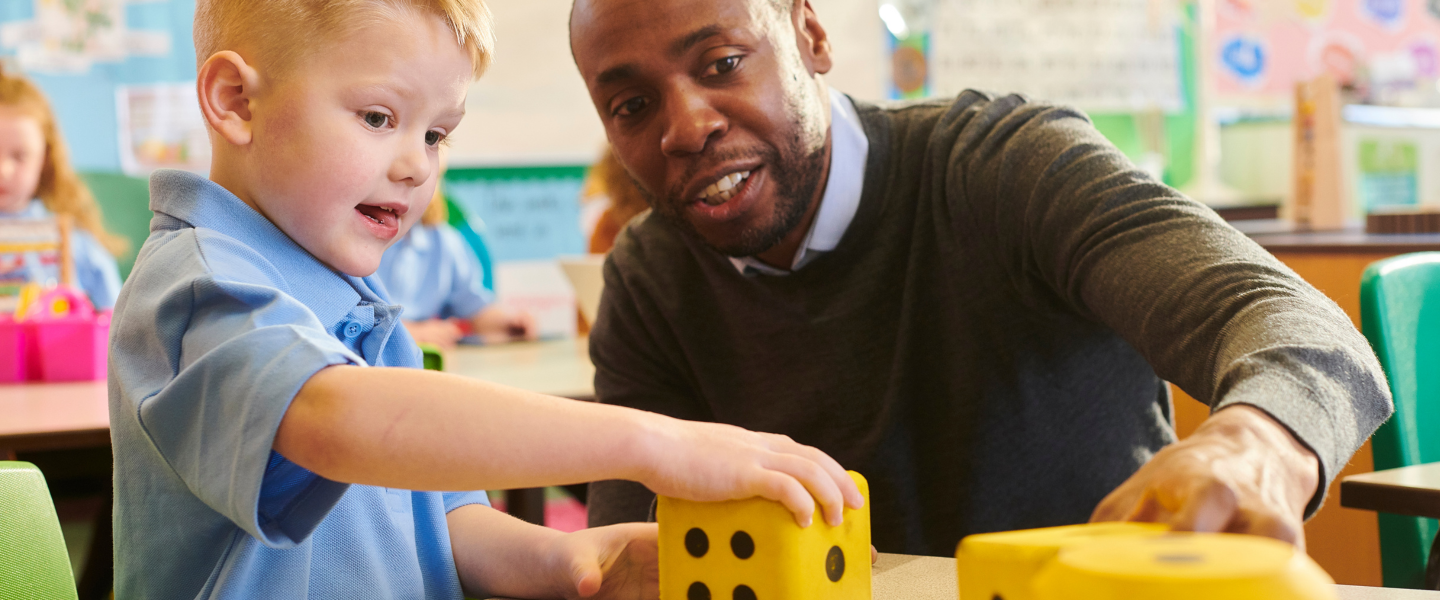Scaffolding: Building Independence: TA Scaffolding Framework for Primary

Author Maria Buttuller
Date 22nd Aug 2025
0 comments
Boost pupil confidence and independence with purposeful scaffolding strategies built on cognitive science and everyday practice.
What Is Scaffolding and Why Does It Matter?
Scaffolding is a powerful, research-informed approach to helping children reach their potential by providing temporary, structured support as they build independence.
If you've ever paused to model a tricky task, offered a sentence starter, or broken a complex idea into steps, you're already scaffolding. Done well, it builds confidence, deepens understanding, and helps children become more self-directed in their learning.
As teachers and TAs, scaffolding supports the aims of the National Curriculum, the Teachers' Standards, and the SEND Code of Practice. It aligns with core professional values: high expectations, inclusive practice, and evidence-informed teaching.
The Building Blocks of Effective Scaffolding
Scaffolding works best when it's grounded in a strong evidence base. Three key ideas shape our understanding:
- Vygotsky’s Zone of Proximal Development (ZPD): Pupils can achieve more with guidance than they can alone. Scaffolding provides that bridge.
- Cognitive Load Theory: Too much information at once overwhelms working memory. Scaffolding reduces overload so pupils can focus on the core learning.
- Gradual Release of Responsibility: “I do, we do, you do” is a proven approach to move from modelling to independent practice.
Effective scaffolding is:
- Temporary: Support fades as the child becomes confident.
- Specific: Tailored to the task and learner.
- Ambitious: Aims for age-appropriate learning, not just catching up.
Classroom Strategies Across the Key Stages
Scaffolding must reflect developmental stages and curriculum demands. Here's how it might look across different age groups:
Reception (EYFS):
- Use multi-sensory experiences (e.g. sand trays for early writing).
- Scaffold routines with picture schedules and ‘first-then’ boards.
- Use visual prompts and gesture-rich language.
- Model turn-taking and offer prompts for play-based communication.
Key Stage 1 (Years 1–2):
- Use “I do, we do, you do” for writing, phonics, and number work.
- Offer sentence starters and visual working walls.
- Use manipulatives in maths to bridge concrete to pictorial understanding.
- Teach memory tools like “say it, clap it, write it” for spelling.
Lower Key Stage 2 (Years 3–4):
- Introduce scaffolds for planning and organising (e.g. writing frames, graphic organisers).
- Model problem-solving and encourage ‘thinking aloud’.
- Scaffold peer talk with discussion stems like “I agree because…”.
- Support transitions from supported to independent work.
Upper Key Stage 2 (Years 5–6):
- Guide children in selecting their own strategies (self-scaffolding).
- Scaffold metacognitive talk: “What’s your plan for this task?”
- Provide structured opportunities for independent practice with feedback.
- Fade supports (e.g. from sentence frames to open-ended prompts).

Scaffolding for SEND and Inclusion
Scaffolding plays a central role in inclusive teaching. While it benefits all pupils, it's especially crucial for those with SEND - ensuring access to age-appropriate curriculum without lowering expectations.
Key principles:
- Personalised, not prescriptive: Plan from strengths and needs, not labels.
- Avoid learned helplessness: Too much support can inhibit independence.
- Focus on clarity: Pupils with processing difficulties benefit from chunking, repetition, and visual aids.
Examples:
- For autistic pupils: Pre-teach language and expectations, use predictable routines and visual scaffolds.
- For pupils with ADHD: Scaffold self-regulation with timers, break cards, or step-by-step task sheets.
- For pupils with SEMH needs: Scaffold emotional safety first through relationships, choice, and calm learning environments.
Scaffolding is not about simplifying the task - it's about making the learning process visible, manageable, and achievable for that individual child.
TA and Teacher Partnerships: Working Together
Scaffolding is most powerful when it's co-constructed. Teachers and TAs play complementary roles in planning and delivering it.
Although all of the following would likely be an unachievable ideal, we can work towards effective collaboration by trying to get elements of:
- Shared planning time: Identify where scaffolding will be needed, who will provide it, and how it will fade.
- Live classroom feedback: TAs can provide feedback on pupil responses to scaffolding in real-time.
- Consistent prompts and cues: Using the same language (e.g. “What’s your first step?”) builds coherence and confidence.
- Joint reflection: Debrief after lessons about what worked and what to adjust.
Embedding Scaffolding into Everyday Teaching
To make scaffolding sustainable and high-quality, it must be a whole-school habit, not a one-off strategy.
Ideas for school-wide implementation:
- CPD focus: Use INSET days or staff meetings to model “I do, we do, you do” across subjects.
- Shared planning templates: Include a scaffolding column in medium-term planning.
- Lesson study or peer coaching: Observe how colleagues scaffold and reflect on impact.
- Pupil voice: Ask children what supports help them the most - and what helps them feel ready to “do it on their own”.
Embedding scaffolding creates a culture where support is normalised, independence is celebrated, and all children are expected to succeed.

Final Thoughts: Reclaiming Scaffolding as a Dynamic Teaching Tool
Scaffolding isn’t a checklist or something you “do” once a child struggles - it’s a mindset. A flexible, responsive approach to teaching that champions each child’s journey from dependence to independence.
The best scaffolding doesn’t feel like scaffolding. It feels like supportive challenge. It invites children to stretch just far enough, knowing there’s someone nearby to guide, but not carry, the learning.
Whether you’re modelling a problem aloud in Year 6, supporting turn-taking with visuals in Reception, or quietly stepping back to let a child try something independently - these moments matter. And they’re worth designing with as much thought as any lesson plan.
So, what next?
- If you're a teacher: What’s one routine you could co-plan with your TA to embed scaffolding more consistently?
- If you're a TA: What's one pupil you could trial a new fading strategy with this week?
- As a school: Could your next INSET revisit “I do, we do, you do” across key stages?
There’s no perfect scaffolding formula - just intentional, adaptive practice that grows over time.
Let’s reclaim scaffolding as the powerful, professional teaching act it truly is.
Ready to put these scaffolding principles into practice?
We've created 40 evidence-based scaffolding guides tailored specifically for teachers and TAs across Reception to Year 6.
Developed in response to feedback from schools just like yours, these practical resources translate the strategies discussed here into ready-to-use classroom tools.
Download your free scaffolding toolkit and discover how targeted, role-specific guidance can transform your practice.
Tags


There are no posts for this topic yet